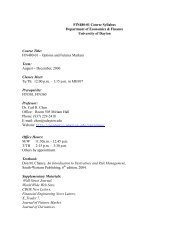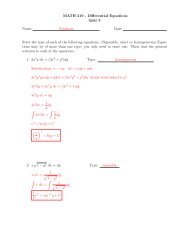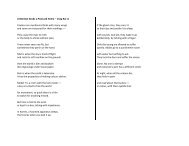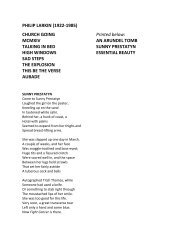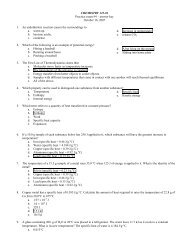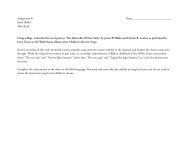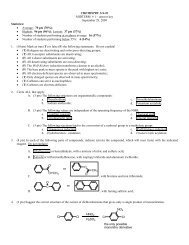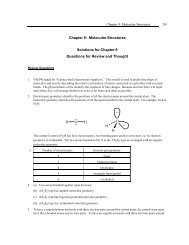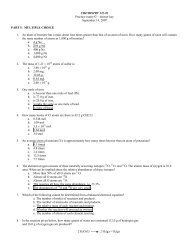Chap 26
Chap 26
Chap 26
Create successful ePaper yourself
Turn your PDF publications into a flip-book with our unique Google optimized e-Paper software.
MONEY, BANKS, AND THE FEDERAL RESERVE 237<br />
6. a. The balance sheet has the following assets: Reserves, $125 million; Loans, $1,875 million; Other<br />
assets, $100 million. It has the following liabilities: Deposits, $2,000 million; Other liabilities,<br />
$100 million.<br />
Assets Liabilities<br />
Reserves $125 million Deposits $2,000 million<br />
Loans 1,875 million Other liabilities 100 million<br />
Other assets 100 million<br />
Total assets 2,100 million Total liabilities 2,100 million<br />
b. The reserve ratio is 6.25 percent.<br />
The reserve ratio is the percentage of deposits that are held as reserves. Reserves are $125 million<br />
and deposits are $2,000, so the reserve ratio is 6.25 percent.<br />
c. The deposit multiplier is 16.<br />
The deposit multiplier equals 1/(required reserve ratio). The required reserve ratio is 6.25<br />
percent, so the deposit multiplier is 16.<br />
7. a. The initial increase in the quantity of money is $1,200.<br />
Money is equal to bank deposits and currency outside the banks. Deposits increase by $1,200,<br />
so the initial increase in the quantity of money is $1,200.<br />
b. The initial increase in the quantity of bank deposits is $1,200.<br />
Deposits increase by $1,200 because the immigrant places all the new money on deposit.<br />
c. The bank initially lends out $1,080.<br />
The bank has a new deposit of $1,200, and it must keep 10 percent of it ($120) as reserves and<br />
lends the rest ($1,200 minus $120), which equals $1,080.<br />
d. The immigrant’s bank has loaned $1,080. This amount returns to the banks as new deposits.<br />
The banks keep $108 in reserves and lend a further $972.<br />
The banks have now created deposits of $1,200 plus $1,080, which equals $2,280.<br />
e. The quantity of money has increased by $9,341.05.<br />
The first loan is $1,080, and the quantity of money increases by $1,080. When this money is<br />
spent and returned to the bank as a deposit, the banks keep 10 percent of it ($108) as reserves<br />
and lend out the rest ($972). The banks create $972 of new money. So, after 2 loans, the<br />
quantity of money has increased by $1,200 + $1,080 + $972, which equals $3,252. Similar<br />
calculations reveal that after 20 loans the quantity of money increases by $9,341.05.<br />
f. The quantity of money increases by $12,000. Deposits increase by $12,000. Loans increase by<br />
$10,800.<br />
The deposit multiplier is 1/0.1, which equals 10. The deposit multiplier tells us that when<br />
reserves increase by $1,200 and the required reserve ratio is 10 percent, deposits will increase by<br />
10 times $1,200, which is $12,000.<br />
T The quantity of money increases by the amount of the increase in deposits.<br />
Deposits increase by $12,000 and the reserve ratio is 10 percent, so reserves increase $1,200.<br />
Therefore bank loans increase by $12,000 minus $1,200, which is $10,800.<br />
8. a. The initial increase in the quantity of money in the United States is $100,000.<br />
Money is equal to bank deposits and currency outside the banks. Deposits increase by $100,000<br />
so the initial increase in the quantity of money is $100,000.<br />
b. The initial increase in the quantity of bank deposits is $100,000.<br />
Deposits increase by $100,000 because the (trusting!) thief places all the new money on deposit.




